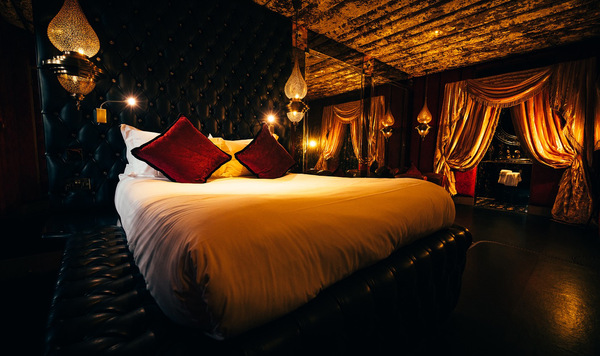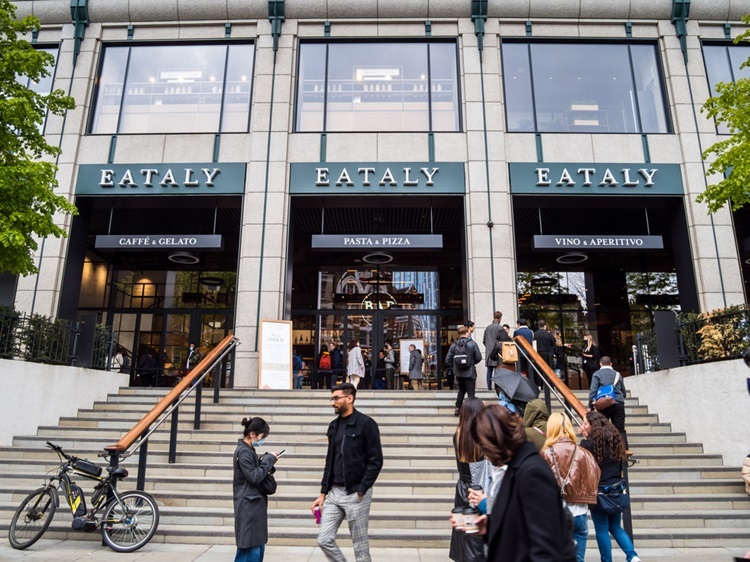In the race to recovery, hotels should stay focused on guest value and ancillary revenue
Sponsored article by Warren Mandelbaum, Senior Sales Director EMEA
After several false starts, loosening and tightening restrictions, and virus mutations, it appears the worst of the pandemic might soon be behind us—fingers crossed. As the world gets vaccinated and travel becomes safer again, 2021 is set to be a year of recovery and rebuilding for the hotel industry.
Now, the race begins in the return to profitability. With growth in room demand expected to come in fits and starts, hoteliers will need to focus their efforts on guest value, targeted marketing and finding additional revenue beyond the guest room.
Understanding guest value
Over the past year, fundamental principles of revenue management have been broadsided in the mad rush to bring in any and all types of revenue. Now it’s time to get back on track. By understanding who your most—and least—profitable guests are, you can prioritise how best to deploy resources in sales, marketing and revenue management to achieve optimal results.
What exactly is guest value? In the simplest sense, it’s a measure of total guest spend per stay, over a specified period of time or over the customer lifetime. But value is relative—factors like time of year, day of week, length of stay and frequency also come into play. For example, today’s travelers represent tremendous value for hotels, even if spend is low, because they’re helping keep the lights on. Ultimately, however, value is about profitability, so costs must be factored in, too.
Here are four key areas to prioritise when assessing guest value:
1 Guest room revenue
Rooms revenue has always been the primary driver of guest value, and for good reason. For most hotels, rooms are the largest and most profitable revenue source. It’s also relatively easy to manage and measure rooms revenue. It can be broken down by market segment, type of guest and other variables and used to guide pricing decisions, promotions and contract negotiations.
2 Ancillary spend
Ancillary revenue, comprising everything from food and beverage to retail and activities, is often overlooked by hoteliers in strategic revenue decisions. This is partly due to the challenges of predicting how much ancillary revenue a guest or group will bring in, but also because sales and revenue staff are often incentivised on rooms revenue rather than total revenue or gross operating profit. To truly boost performance, hotels need to pursue total revenue strategy, factoring all revenue streams into decision-making, benchmarking and incentive plans.
3 Channel Costs
But that’s not all. The ultimate goal is total profit optimisation, which also factors in the costs associated with different types of business. Last year, hoteliers had to dig deep to find ways to operate with minimal cash flow. This year, they will have to be even more creative. A good place to start is with costs of acquisition or channel costs. Rather than chase bookings at any cost, hotels need to go back to assessing acquisition costs and shifting resources to the most profitable channels.
4 Servicing Costs
Also needing greater scrutiny are the costs of servicing guests. While some of these expenditures are fixed, others, like labour and cleaning supplies, can vary significantly by type of guest. For example, long stays are especially valuable while new cleaning and social distancing protocols are in place, requiring less servicing and reducing room turnover.
Thinking beyond the guest room
Once you have a clearer idea of your most valuable guests, it’s time to develop strategies to entice them back, find more like them and increase overall spend. Here are some key areas to focus on:
Guest room revenue
As mentioned, rooms are generally more profitable, but they also drive ancillary spend—if you target the right guests. As long as demand for groups, meetings and business travel is weak, leisure travel is our best hope. However, leisure travelers tend to be price-sensitive, and deep discounting may attract guests who are less likely to purchase ancillary services.
Additional segments to target include frequent guests and loyalty members, regional travelers, local residents and remote workers. Some hotels are repurposing a portion of room inventory as private workspaces, others are offering monthly subscriptions for access to workspaces and resources. As travel regains momentum, reinstating fees and restrictions will help protect room inventory and drive incremental revenue.
Meetings and events
Meetings and events have only one direction to go in 2021: up. But the pace of growth will depend on how comfortable people are with meeting, eating and socialising in groups again. In the short term, at least, hotels will need to maintain strict social distancing and sanitation protocols. As an example, some hotels now offer meeting professionals the option of onsite Covid-19 testing for attendees.
In the longer term, hybrid meetings and outdoor events may turn out to be long-lasting trends, requiring investments in equipment and the repurposing of spaces.
Food and beverage
Today, travelers are more accepting of scaled-down services, presenting an opportune time for hotels to re-evaluate, restructure or retire unprofitable services. With high costs and low margins, food and beverage has enormous potential. Grab-and-go meals, takeout services and packaged meals dropped off at the door provide safer and more profitable alternatives to traditional, labor-intensive services. These too might turn out to be enduring trends.
Activities and other inventory
As outlets reopen, more guest time spent on property should create more opportunities to sell spa, retail and activities, as well as in-room services like entertainment and spa treatments. And with all that drive-in business, don’t forget to yield parking revenue. Use pre-stay and in-stay messaging to promote ancillary services and touch-free technology to make booking them safe and easy.
By applying revenue management strategies and tactics like dynamic pricing and inventory controls to all revenue streams, hotels can find ways to boost performance across the property.
On your marks
In reality, the race to recovery will be more a marathon than a sprint, and you can expect hurdles along the way. Shifting the mindset to total profit optimisation will require strong leadership and cross-departmental collaboration, as well as advanced revenue technology that facilitates tracking all revenue sources, channel costs and servicing costs.
With forward-thinking, agile strategies, hotels can make great strides along the path to recovery in 2021, eventually leaving the crisis in the dust behind us.
Integrated Decisions and Systems (IDeaS) is here to help the hospitality industry recover and rebuild stronger with the world's most innovative Revenue Management Solutions.
re/ignite your profitability, re/imagine your commercial success, and re/invent what’s possible with IDeaS, powered by revenue science. Find out more here.
















